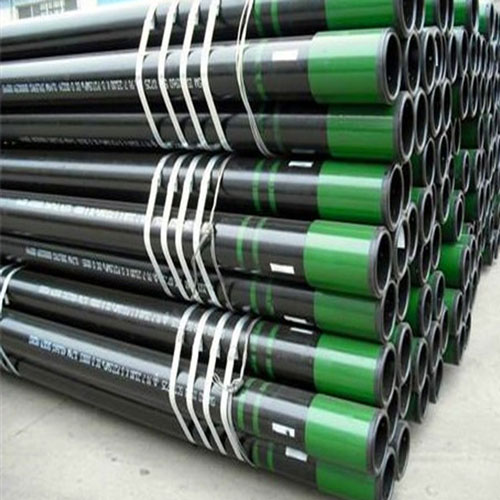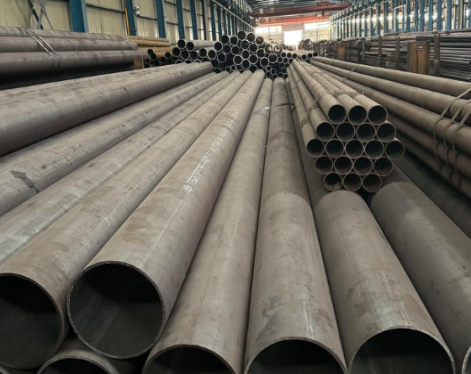Removing a casing pipe from a borewell is a critical process in various industries, including construction, mining, and water resource management. Whether it's for maintenance, repair, or decommissioning purposes, the proper removal of a casing pipe is essential to ensure the integrity and functionality of the borewell. In this guide, we will explore the step-by-step process of removing a casing pipe from a borewell, covering safety considerations, required equipment, and best practices.
1.Importance of casing pipe
Before diving into the removal process, it's important to understand the role of a casing pipe in a borewell. A casing pipe, typically made of steel or PVC, serves as a protective barrier for the borehole, preventing collapse and contamination from surrounding soil and rock formations. It also facilitates the extraction of groundwater and provides structural support for the well. Over time, casing pipes may require removal due to factors such as damage, blockages, or the need for deeper drilling.
2.Pre-Removal Preparation
(1)Safety First
Prioritize safety by conducting a thorough risk assessment of the borewell site. Ensure that all personnel involved are equipped with appropriate personal protective equipment (PPE) and are aware of potential hazards associated with the removal process.
(2)Equipment Check
Gather the necessary tools and equipment for the removal, including a pipe wrench, lifting device (such as a crane or hoist), cutting tools (if needed), and any additional support materials required for handling the casing pipe.
(3)Site Clearance
Clear the area around the borewell to provide ample space for maneuvering and operating the necessary equipment. Remove any obstructions or debris that could impede the removal process.

3.Step-by-Step Removal Casing Pipe Process
Step 1: Loosening and Unfastening
Using the pipe wrench, carefully loosen and remove the bolts or clamps securing the casing pipe to the borewell casing. This step requires precision and attention to detail to avoid damaging the threads or connections on the casing pipe. If the casing pipe has been cemented in place, it may be necessary to break the cement seal before attempting to unfasten the pipe.
Step 2: Lifting and Extraction
Once the fastenings are removed, utilize the lifting device to gradually extract the casing pipe from the borewell. Exercise caution during this step to prevent sudden movements or shifts that could compromise safety. If the casing pipe is particularly long or heavy, consider using additional support structures or rigging to aid in the lifting process.
Step 3: Cutting and Sectioning (If Necessary)
In situations where the casing pipe cannot be extracted in one piece due to length, obstructions, or other constraints, cutting and sectioning the pipe may be required. Use appropriate cutting tools, such as a reciprocating saw or pipe cutter, to carefully segment the casing pipe into manageable sections for removal. Take care to contain any resulting debris and maintain a safe work environment throughout the cutting process.
Step 4: Disposal and Site Cleanup
Dispose of the removed casing pipe responsibly, adhering to local regulations and environmental guidelines for waste management. Depending on the material of the casing pipe, recycling options may be available. After the removal process is complete, conduct a thorough cleanup of the borewell site to remove any leftover debris, lubricants, or contaminants that may have accumulated during the operation.
4.Precautions for downhole casing removal
The removal of casing needs to be carried out in strict accordance with the specifications. The following points must be paid attention to:
(1)Before dismantling, it is necessary to carefully understand the condition of the underground pipeline and clarify the transformation plan.
(2)It is necessary to conduct ventilation and gas detection underground to ensure personnel safety.
(3)Professional tools must be used during the dismantling process to ensure the safety of operators and the public on site.
(4)Accident prevention and emergency response
When performing downhole casing removal operations, certain preventive capabilities are required, and accidents must be handled promptly.
Conclusion and Best Practices
Successfully removing a casing pipe from a borewell requires careful planning, adherence to safety protocols, and the use of appropriate tools and techniques. By following the steps outlined in this guide, you can ensure that the removal process is conducted efficiently and with minimal risk to personnel and the surrounding environment.
1.Importance of casing pipe
Before diving into the removal process, it's important to understand the role of a casing pipe in a borewell. A casing pipe, typically made of steel or PVC, serves as a protective barrier for the borehole, preventing collapse and contamination from surrounding soil and rock formations. It also facilitates the extraction of groundwater and provides structural support for the well. Over time, casing pipes may require removal due to factors such as damage, blockages, or the need for deeper drilling.
2.Pre-Removal Preparation
(1)Safety First
Prioritize safety by conducting a thorough risk assessment of the borewell site. Ensure that all personnel involved are equipped with appropriate personal protective equipment (PPE) and are aware of potential hazards associated with the removal process.
(2)Equipment Check
Gather the necessary tools and equipment for the removal, including a pipe wrench, lifting device (such as a crane or hoist), cutting tools (if needed), and any additional support materials required for handling the casing pipe.
(3)Site Clearance
Clear the area around the borewell to provide ample space for maneuvering and operating the necessary equipment. Remove any obstructions or debris that could impede the removal process.

3.Step-by-Step Removal Casing Pipe Process
Step 1: Loosening and Unfastening
Using the pipe wrench, carefully loosen and remove the bolts or clamps securing the casing pipe to the borewell casing. This step requires precision and attention to detail to avoid damaging the threads or connections on the casing pipe. If the casing pipe has been cemented in place, it may be necessary to break the cement seal before attempting to unfasten the pipe.
Step 2: Lifting and Extraction
Once the fastenings are removed, utilize the lifting device to gradually extract the casing pipe from the borewell. Exercise caution during this step to prevent sudden movements or shifts that could compromise safety. If the casing pipe is particularly long or heavy, consider using additional support structures or rigging to aid in the lifting process.
Step 3: Cutting and Sectioning (If Necessary)
In situations where the casing pipe cannot be extracted in one piece due to length, obstructions, or other constraints, cutting and sectioning the pipe may be required. Use appropriate cutting tools, such as a reciprocating saw or pipe cutter, to carefully segment the casing pipe into manageable sections for removal. Take care to contain any resulting debris and maintain a safe work environment throughout the cutting process.
Step 4: Disposal and Site Cleanup
Dispose of the removed casing pipe responsibly, adhering to local regulations and environmental guidelines for waste management. Depending on the material of the casing pipe, recycling options may be available. After the removal process is complete, conduct a thorough cleanup of the borewell site to remove any leftover debris, lubricants, or contaminants that may have accumulated during the operation.
4.Precautions for downhole casing removal
The removal of casing needs to be carried out in strict accordance with the specifications. The following points must be paid attention to:
(1)Before dismantling, it is necessary to carefully understand the condition of the underground pipeline and clarify the transformation plan.
(2)It is necessary to conduct ventilation and gas detection underground to ensure personnel safety.
(3)Professional tools must be used during the dismantling process to ensure the safety of operators and the public on site.
(4)Accident prevention and emergency response
When performing downhole casing removal operations, certain preventive capabilities are required, and accidents must be handled promptly.
Conclusion and Best Practices
Successfully removing a casing pipe from a borewell requires careful planning, adherence to safety protocols, and the use of appropriate tools and techniques. By following the steps outlined in this guide, you can ensure that the removal process is conducted efficiently and with minimal risk to personnel and the surrounding environment.









